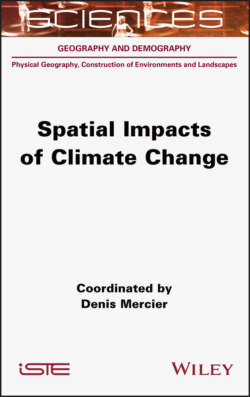Читать книгу Spatial Impacts of Climate Change - Denis Mercier - Страница 27
2.3.2. Antarctic sea ice
ОглавлениеOn the other hand, the dynamics and evolution of the sea ice surrounding the Antarctic continent are of a different nature.
Figure 2.5. Antarctic sea ice extents derived from satellite data DMSP Nimbus7 and NASA. For a color version of this figure, see www.iste.co.uk/mercier/climate.zip
(source: Parkinson 2019)
COMMENT ON FIGURE 2.5.- (a) Mean monthly sea ice extent for the southern hemisphere from January 1979 to December 2018. The February ranges are shown in red, the September ranges in green and all other ranges in black. (Box) The 40-year average annual cycle. (b) Monthly deviations determined from the monthly mean data of (a), with the same monthly color coding and with the line of least squares. (c) Mean annual sea ice extent and trend.
The spatial extension of the Antarctic sea ice is symmetrical around the continent from the South Pole and reveals a double spatial astronomical and therefore thermal logic. In addition, sea currents and winds circulate continuously around the continent in an hourly direction. They then act as a thermal barrier surrounding the continent. Unlike the Arctic Basin, the absence of a land boundary around the continent allows Antarctic sea ice to float freely towards mid-latitudes where warmer waters cause it to melt. As a result, most of the sea ice that forms during the southern winter melts during the summer season. During the winter, the Antarctic sea ice reached an average of 18 million km2 between 1981 and 2010 with a maximum extension in September. In September 2014, it even reached 20 million km2. Its minimum extension was still registered in February with less than 5 million km2 (see Figure 2.5; NSIDC 2019; Parkinson 2019).
Since record levels in 2014 and despite the significant declines in recent years in the spatial extent of the Antarctic sea ice, the trend for the period 1979-2018 still remains positive with an increase of 11,300 km2 per year (Parkinson 2019). The causes of this increase in the spatial extent of the Antarctic sea ice have not yet been agreed (Parkinson 2019). On the other hand, the impact of this variability in the extension of the sea ice around Antarctica determines the extent of pre-precipitation for the continent. Between a reduced extension and a vast extension of the sea ice, the difference in precipitation is estimated at 102 Gt per year (Wang et al. 2020).
